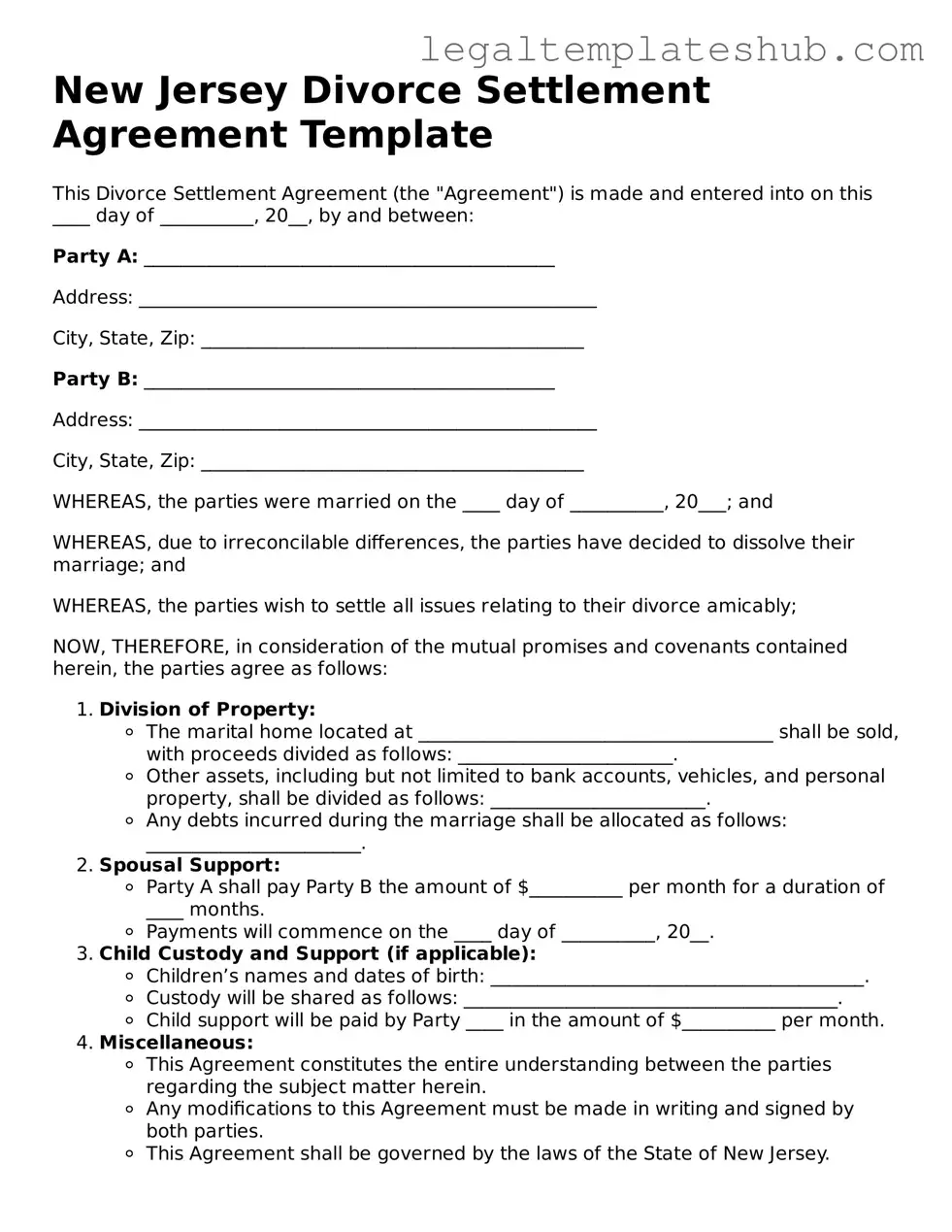Printable Divorce Settlement Agreement Document for New Jersey
The New Jersey Divorce Settlement Agreement form is a legal document that outlines the terms agreed upon by both parties in a divorce. This form addresses various aspects of the divorce, including asset division, alimony, child custody, and support. Understanding this form is essential for ensuring a smooth transition during a challenging time.
Ready to take the next step? Fill out the form by clicking the button below.
Access Editor
